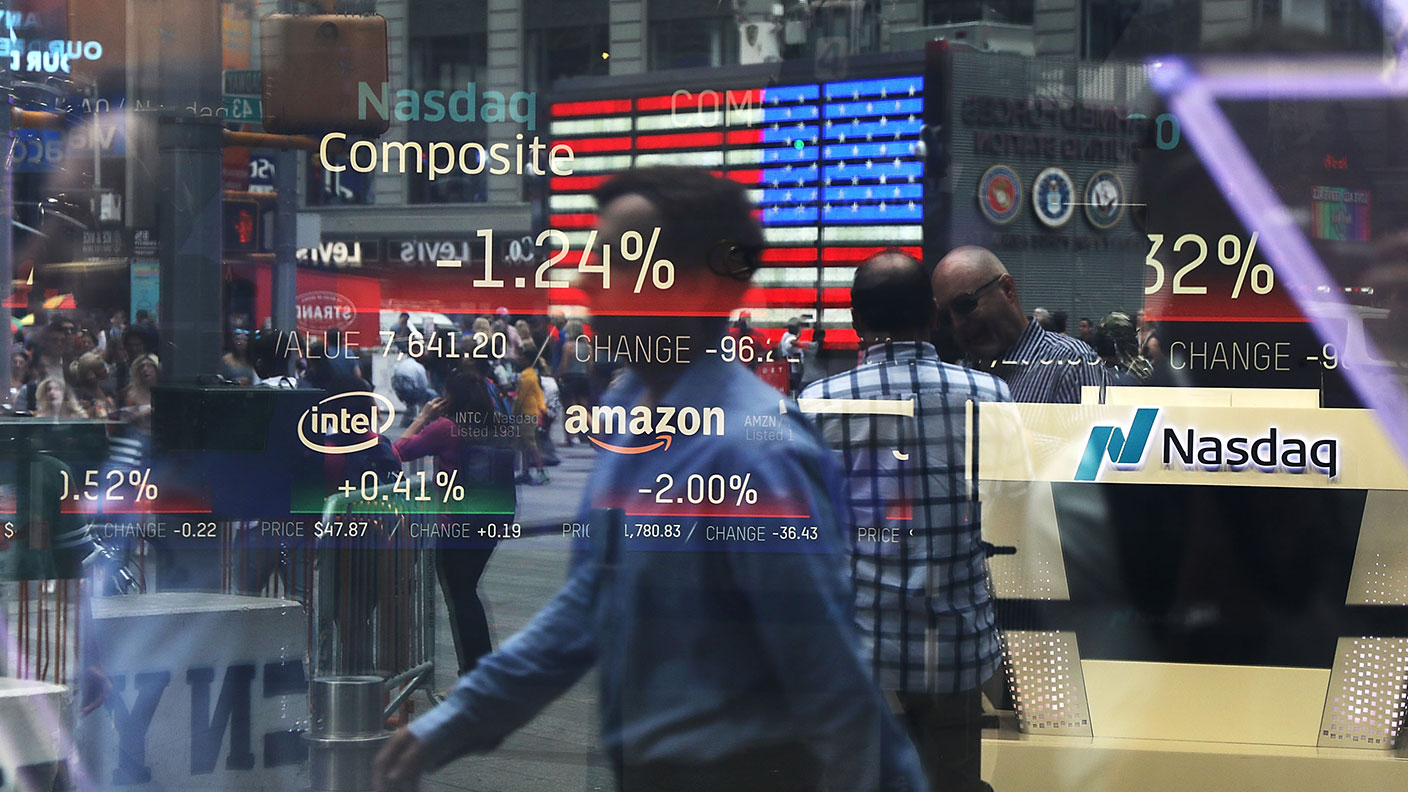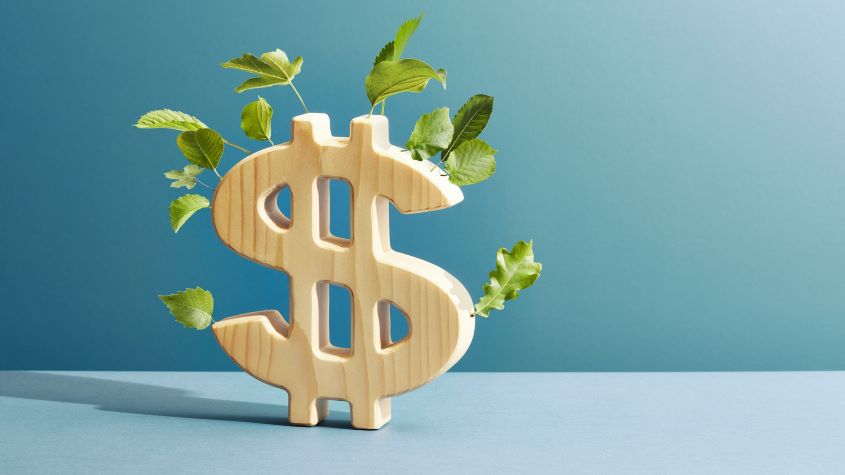Can stockmarkets continue to keep their cool in 2022?
Stockmarkets have recovered well from their recent lows, says Max King. But can that continue?

Despite rising commodity prices and higher inflation, equity markets have recovered well from their March lows.
As analyst Ed Yardeni pointed out on Monday: “The S&P 500 dropped 13% from its record high on January 3rd through March 8th. It rebounded 11% through March 29th. Since then, it has lost 3% through Friday’s close” leaving it down 6.5% for the year to date – or just 2.5% in sterling.
The FTSE 100 meanwhile, is up 2.2%.
MoneyWeek
Subscribe to MoneyWeek today and get your first six magazine issues absolutely FREE

Sign up to Money Morning
Don't miss the latest investment and personal finances news, market analysis, plus money-saving tips with our free twice-daily newsletter
Don't miss the latest investment and personal finances news, market analysis, plus money-saving tips with our free twice-daily newsletter
Can this perhaps surprising resilience continue?
Can the Federal Reserve avoid pushing the US economy into recession?
“The forward earnings of the S&P 500 remains on a sharp uptrend,” notes Ed Yardeni, “but the forward price/earnings ratio of the S&P 500, having dropped to 18.1 on March 14th, remains relatively high at 19.3, down from an early November 2021 high of 21.5.”
The rest of the world is significantly cheaper on a forward multiple of 13.4, as are the US mid- and small-cap sectors, while the S&P 500 valuation is pushed around two points higher by its top eight tech-related mega-caps.
Yardeni notes that profit margins remain near their record highs but still expects the earnings of the S&P 500 to rise to $240 per share this year (up 15%) and $260 next (up 8%) compared with an analysts’ consensus – on which forward multiples are based – of $227 this year and $240 next. If he is right, the forward multiple will fall to 17 by the end of the year.
On this basis, US equities would be attractive – but he still advises “don’t fight the Fed when the Fed is fighting inflation.”
The determination of the Federal Reserve, America’s central bank, to raise interest rates to combat inflation is becoming increasingly apparent. This points to a federal funds rate of 2.75% to 3% by mid-2023, according to Yardeni, with inflation moderating to 4-5% in the second half of 2022.
The question is, he says, “can the Fed bring down inflation without a recession?” If not, then earnings forecasts will be cut and the valuation multiple will be correspondingly higher. Earnings growth is needed to bring the multiple of the S&P 500 down to attractive levels.
US mid- and small-caps and non-US equities look much more attractive, but are unlikely to perform well unless led by the S&P 500. The resilience of capitalism in the US, its relative political stability and its self-sufficiency in energy argue for a premium valuation, as does its global leadership in innovation. As the saying goes “when America sneezes, the rest of the world catches a cold.”
The prospect of rising interest rates has led to rising government bond yields, with the yield on the ten-year US Treasury recently reaching 2.7%. A rise to anywhere near the inflation rate, currently 8.5%, would be disastrous for the US economy and stockmarket but current yields are so low that they imply significant losses in real terms for bond investors.
Greg Openshein of Verdad Capital is more relaxed, however. “The drawdown of 16% in the ten-year US Treasury that began in July 2020 is now the fifth-worst on record. The average six-month subsequent return from the worst drawdown is 4.9%.” The Fed is now in a cycle of interest-rate rises, he says, and these are normally positive for bond returns.
Don’t worry, be patient
To those who remember the 1970s and 1980s, it is remarkable that after-inflation yields on government bonds are so negative – but it would be wrong to assume that they are irrational.
The experts like to think that they are smarter than markets, but markets are nearly always right. Current yields imply that inflation will moderate rapidly, probably as the increase in commodity prices reverses. If so, the outlook for both bond and equity investors will improve rapidly.
Those who feel lucky might prefer to wait six months before investing, by when some of the uncertainties should have cleared, or wait for renewed market weakness. Both strategies risk missing the boat – and it is always hard to scramble into a rising market. Buying now and not expecting much until later in the year is a safer strategy.
Remarkable value is appearing in some unexpected places. As Sven Borho, co-manager of the £2bn Worldwide Healthcare Trust (LSE: WWH), says “we have seen the biggest bear market in 30 years in the biotechnology sector.” In the last 12 months or so, the S&P biotechnology index under-performed the S&P 500 by 64%, falling by nearly 50% to the level last seen in mid-2015.
“The healthcare sector now trades on a 20% discount to the S&P 500, the same as in the financial crisis. Every single time it has traded at such a discount has been the very best time to be invested, especially in innovation and growth.” This was not the consequence of the pandemic that we all expected.
The technology sector has suffered a sharp fall too, but David Toms, director of research at Hg Capital, puts this fall into context. The value of unprofitable companies relative to sales, he says, has halved in the last year – but that of profitable companies is only down 4%. “Unprofitable companies were growing sales much faster but growth for growth’s sake has been hit hard.” In other words, a year ago, unprofitable companies were valued at very similar levels to profitable ones but now they have reverted to their historic discount.
The software sector, he adds, now trades on 18 times cash flow compared with 14 for non-software, yet the valuation relative to free cash flow is very similar at 28 and 27. This reflects the low capital requirements of the software sector. With double-digit growth in revenue likely to continue, valuations are attractive.
In short, the valuations of many growth stocks are now either attractive or very attractive, having been pulled down by those that have failed to live up to early promise. The vulnerability of these stocks to the economic cycle and rising interest rates is low while long-term growth looks assured. Some of the world’s smartest investors are responding to the opportunity by buying those that have fallen out of favour.
Patience will be rewarded.
Get the latest financial news, insights and expert analysis from our award-winning MoneyWeek team, to help you understand what really matters when it comes to your finances.

Max has an Economics degree from the University of Cambridge and is a chartered accountant. He worked at Investec Asset Management for 12 years, managing multi-asset funds investing in internally and externally managed funds, including investment trusts. This included a fund of investment trusts which grew to £120m+. Max has managed ten investment trusts (winning many awards) and sat on the boards of three trusts – two directorships are still active.
After 39 years in financial services, including 30 as a professional fund manager, Max took semi-retirement in 2017. Max has been a MoneyWeek columnist since 2016 writing about investment funds and more generally on markets online, plus occasional opinion pieces. He also writes for the Investment Trust Handbook each year and has contributed to The Daily Telegraph and other publications. See here for details of current investments held by Max.
-
 Six steps business owners should consider before April inheritance tax relief change
Six steps business owners should consider before April inheritance tax relief changeNew limits to inheritance tax-free allowances are coming in from the Spring that affect business owners. Those looking to sell or transfer their assets into a trust before the changes need to act now
-
 Edinburgh Worldwide shareholders reject Saba proposals
Edinburgh Worldwide shareholders reject Saba proposalsToday’s requisitioned general meeting of Edinburgh Worldwide shareholders has ended in another defeat for activist investor Saba Capital management
-
 Is it different this time for Japanese stocks?
Is it different this time for Japanese stocks?Analysis Nikkei 225 Index has jumped 19.8% this year, and there are signs the rally could continue.
-
 As China reopens, why pick an income strategy?
As China reopens, why pick an income strategy?Advertisement Feature Yoojeong Oh, Investment Manager, abrdn Asian Income Fund Limited
-
 Is Japan the best market to invest in now?
Is Japan the best market to invest in now?Opinion Japan puts Western economies to shame and offers good value for both equity and bond investors, says Max King.
-
 The highest yielding S&P 500 Dividend Aristocrats
The highest yielding S&P 500 Dividend AristocratsTips Dividends are a key component of investment returns in the long-term. A portfolio of dividend aristocrats is a great way to build wealth and a sustainable income stream.
-
 2023 will be a bumper year for stocks. Here’s how to play the rally
2023 will be a bumper year for stocks. Here’s how to play the rallyTips Dominic Frisby explains why he thinks the market rally could have further to run in 2023 despite macroeconomic headwinds
-
 A new dawn for Asian markets?
A new dawn for Asian markets?Advertisement Feature James Thom, Investment Manager, abrdn New Dawn Investment Trust plc
-
 China’s post-covid investment boom off to a slow start. Should you still invest in China?
China’s post-covid investment boom off to a slow start. Should you still invest in China?Advice Investors are no longer bullish on the China shop but the gloomy consensus on Beijing’s economy might be unfair. Should you invest in China?
-
 Stock market crash? This time it’s (slightly) different
Stock market crash? This time it’s (slightly) differentOpinion The bears expecting a stock market crash have got it wrong, says Max King.
